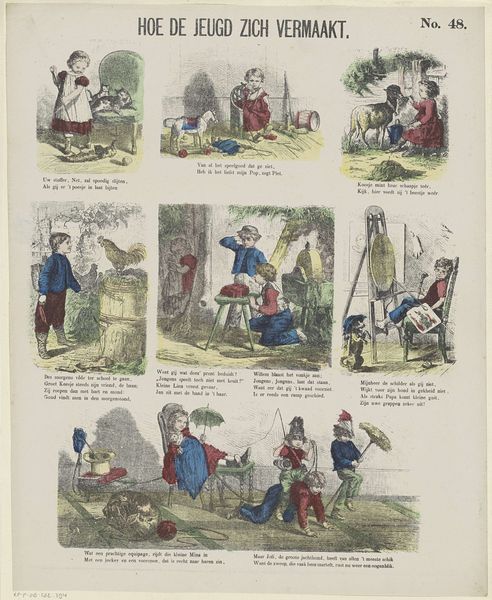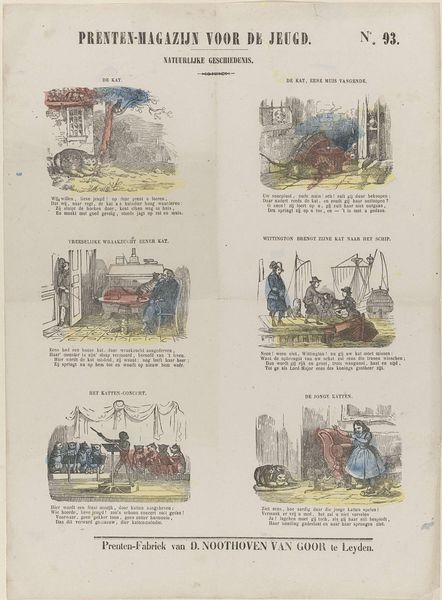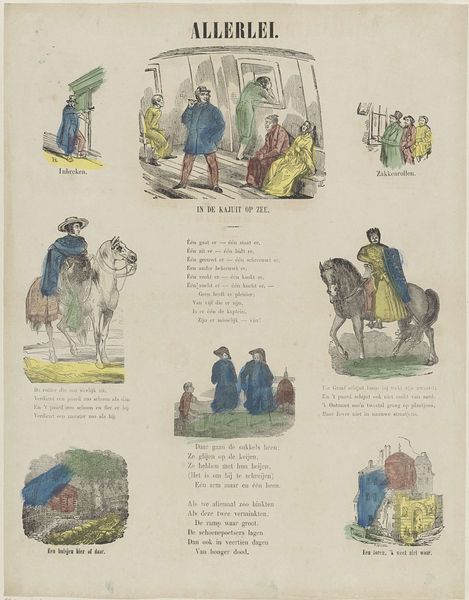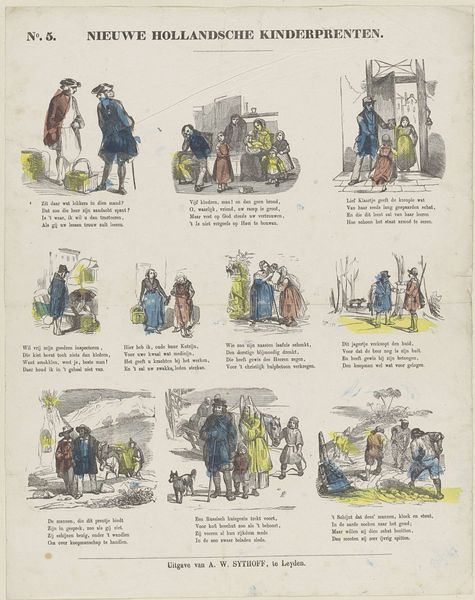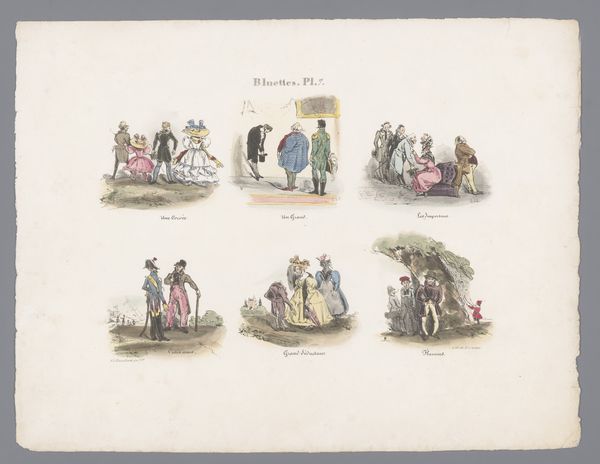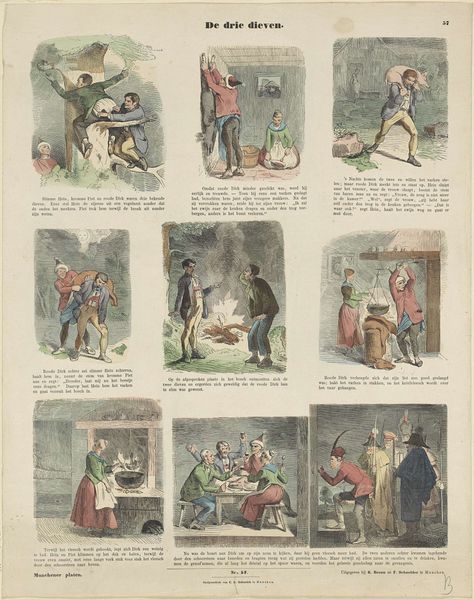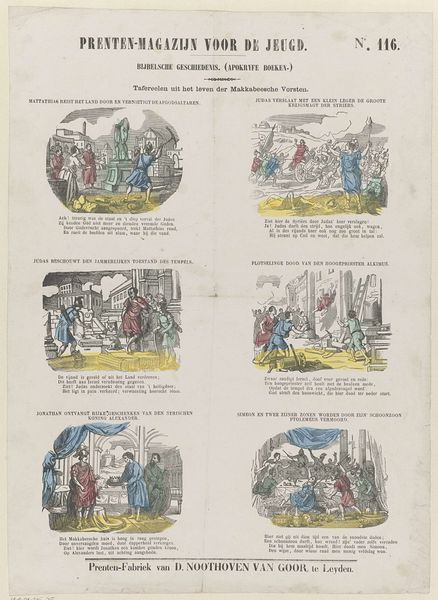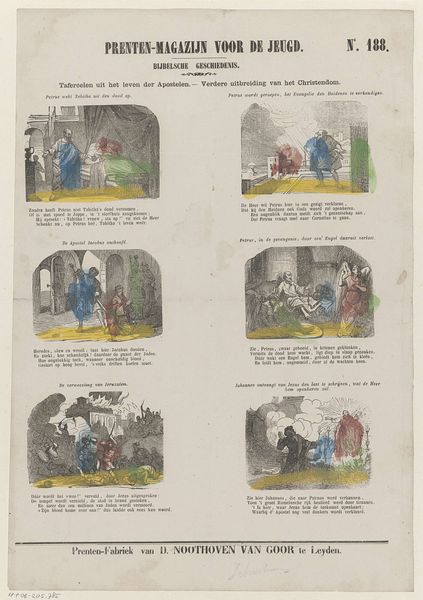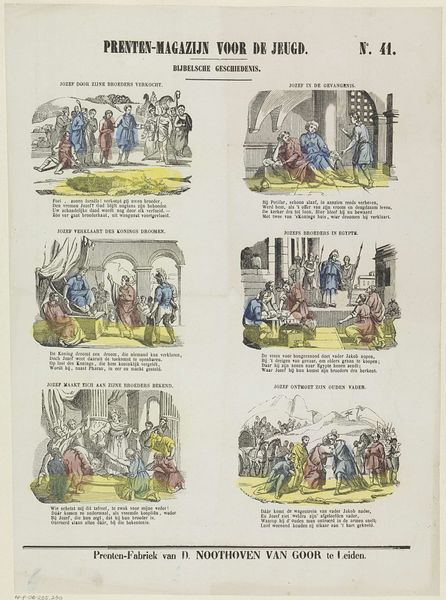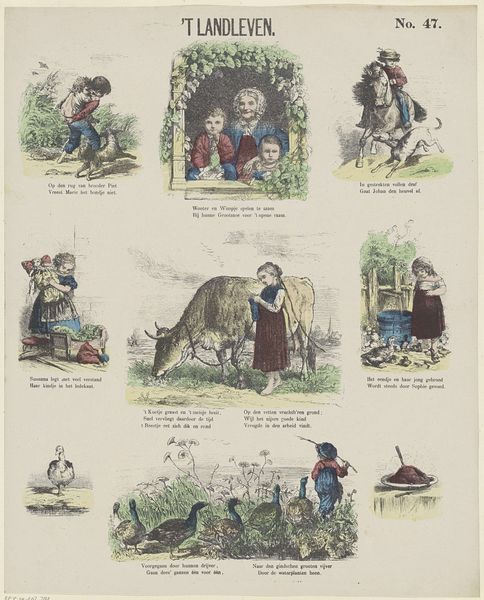
print, weaving, woodblock-print
#
dutch-golden-age
# print
#
weaving
#
landscape
#
folk-art
#
woodblock-print
#
genre-painting
#
watercolor
Dimensions: height 420 mm, width 336 mm
Copyright: Rijks Museum: Open Domain
Editor: This is "Het vlas," or "The Flax," from 1874. It's a print, seemingly a woodblock, by De Ruyter & Meijer, showing different stages of flax production. The print is separated into 6 vignettes or little chapters of this process and the process itself seems so tactile, almost… primal. What can you tell me about this print? Curator: It's a fascinating visual document. Beyond a mere depiction of flax processing, it reveals deep-seated cultural values and echoes. Flax, throughout history, has symbolized domesticity, labor, and community. This piece, divided into these scenes, speaks of a structured society intimately connected to the land. Consider the visual rhythm, each image functioning as a memory trigger. What emotions are conjured when you observe the cyclical nature of the work, from field to fabric? Editor: It's almost…comforting? There's something very grounding about seeing these images. The connection to the land you mentioned is palpable. Even the figures seem at one with the landscape, their lives determined and sustained by it. Curator: Precisely. Note the repeating visual motifs: the hands, the textures of the flax itself, and the consistent presence of figures working together. These aren’t merely depictions; they're potent symbols of human interconnectedness. The colors used enhance this idea – muted tones evoke a sense of timelessness. How do you think this kind of imagery impacted the viewer of that era? Editor: Perhaps a sense of pride in their work and the role they played in the community? It definitely makes me think about the disconnect many people feel from production in the modern world. I find myself envying a past that may not have even existed in reality, at least not for all people. Curator: Yes, it’s a reminder that images do far more than represent. They hold emotional and ideological power, constantly reinterpreted through different eras. In the age of industrialization, prints like this served as potent visual reminders of what was lost... and perhaps, what could still be valued. Editor: So, by understanding the symbols within the artwork, we can learn not only about the art itself but about the culture and society from which it came. Curator: Precisely, and hopefully better understand our own place in that ongoing cultural conversation.
Comments
No comments
Be the first to comment and join the conversation on the ultimate creative platform.
